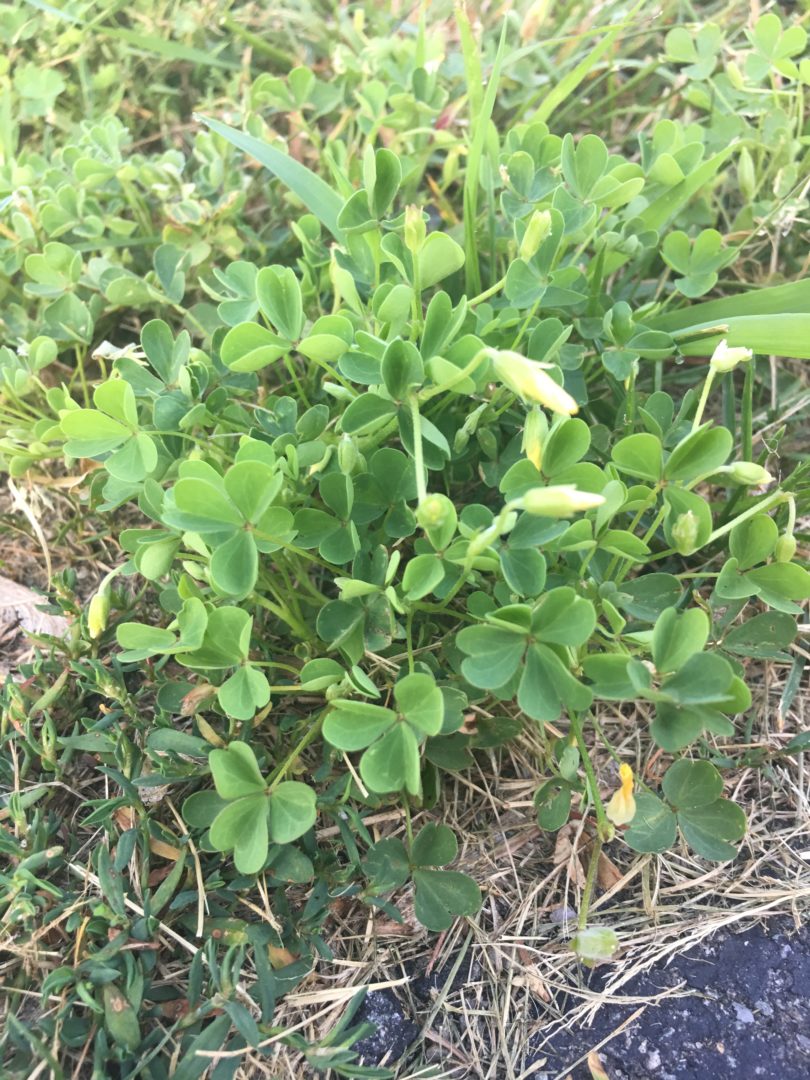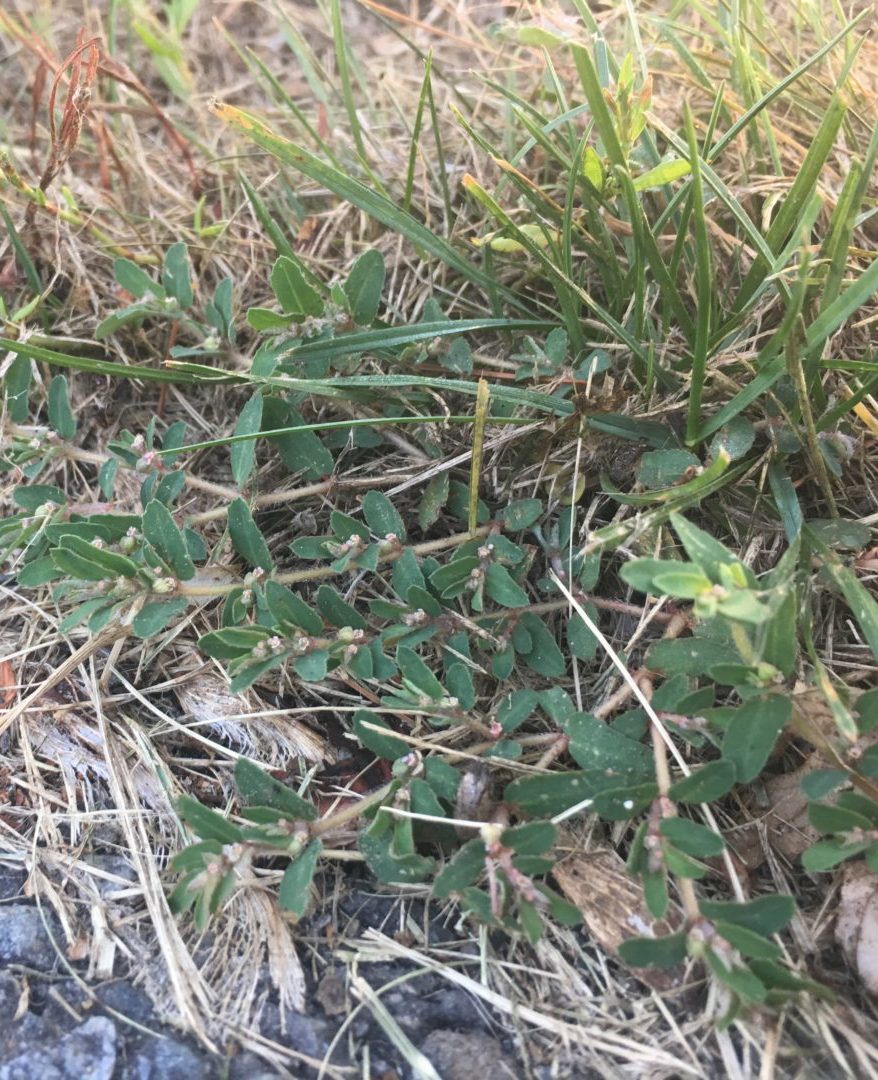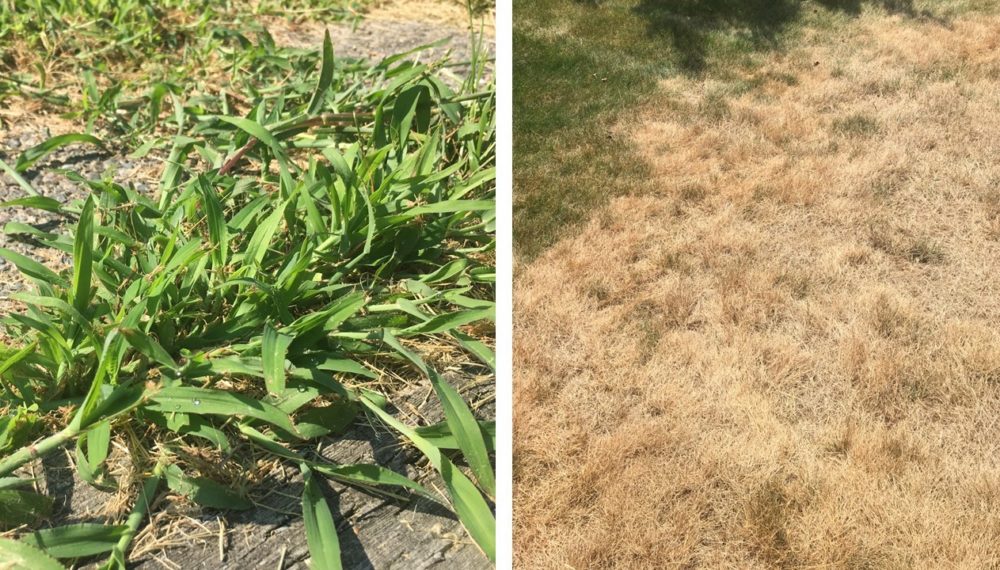Our New England summer went from wet and cool to now hot and dry…each creating their own set of lawn issues. The June 27 post addressed the nutrient deficiencies and fungal disease from the earlier wet and cool weather. This post is about the effects high temperatures and sporadic dry conditions can have on lawns.
Crabgrass
Crabgrass is nothing if not opportunistic. During the recent heat wave, crabgrass appeared in lawns that are thin or prone to drying out. Hot air temperatures can turn good grass brown/tan and super heat the soil. Crabgrass loves the heat and drought conditions and will flourish in any open or susceptible space. Left untreated, crabgrass, can grow up and over any nearby desirable turf at an astonishing rate. Even if you had a preventative spring crabgrass application, the many environmental and site issues may necessitate a mid-summer crabgrass control boost.

Black medic
Other Annual Weeds
In addition to crabgrass, we have also been seeing unusual amounts of summer annuals like black medic and spurge, especially along driveways and thin patches. This could possibly be a direct result of spring’s excessive rain and the now hot/dry weather. Black medic looks like small clover plants, upright with yellow flowers. Spurge is another persistent and difficult summer annual to control once present. It grows low to the ground with long creeping-style stems. The good news is that all these annual weeds will die in the fall. Contact your lawn care provider for treatment options for all summer annual weeds.
Signs of a Weak Lawn
I would be remiss if I didn’t discuss the fact that crabgrass and other annual weeds can often be a sign of a compromised lawn that needs additional help. Most healthy lawns can resist severe crabgrass infestations simply because the turf canopy is thick, healthy, and cut at a proper mowing height of at least 3”. On the lawn’s surface, issues could be past insect or disease damage causing thin areas, and or improper mowing practices that add stress to desirable grass. (Click here for more on mowing tips.) In the soil, the problem could be compaction, improper pH levels, and or low organic activity. Fertile soil is the foundation for a think and healthy lawn that simply does not give crabgrass or other annual weeds the space to grow.

Spurge
Brown Lawns
The recent high heat and uneven rainfall means some lawns went without needed water for cooling and growth while other areas received more than enough. Sandy lawns, those with a slope, buried ledge or other factors can cause grass to go into dormancy. Dormancy allows the plant to focus limited resources on their roots, rather than the grass blades, in order to survive. Lawns are able to stay in this state for 3-4 weeks without dying…much longer than that and your lawn will likely experience permanent thinning unless some water is provided. Without irrigation, browning is particularly likely in open sunny areas, especially those with thin areas and sandy soil. The grass in the photo above is now dormant for at least 2-4 weeks, even if watered, due primarily to hot air temperatures and dry soil beneath. Irrigation, either by Mother Nature or via a sprinkler, should occur for 45 minutes every other day to restart leaf growth. (Click here for watering tips.)
Late July and August are typically the hardest months for our cool-season grasses, so while you are enjoying the beach or a hike in the mountains, please realize your grass is wishing fall was already here. Remember, these summer annuals will all die with a frost, the key now is to keep your investment looking the best it can through smart, educated decisions. These may include supplemental spraying, reduced mowing frequency and irrigation of hot spots where practical.


